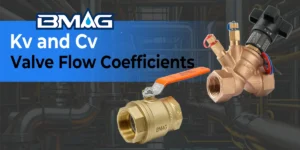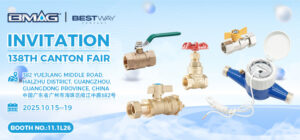አይ. መግቢያ
1.1 የቫልቭ ልብ: የቁስ አስፈላጊነት
በከባድ አጥንት የመቋቋም ችሎታ ምክንያት Braoss ለቫሌቭ አካላት እና አካላት ለቫሌን ለቫሌዎች እና አካላት ተመራጭ ቁሳቁስ ሆኗል, የማሽኑ ምቾት, እና አጠቃላይ ወጪ-ውጤታማነት. ቢሆንም, ሁሉም ነሐስ እኩል አይደለም. ጥሬ እቃው የማኑፋካክ ማምረቻ ሂደት - የናስ በትር - በመጨረሻው አፈፃፀም ውስጥ ወሳኝ ሚና ይጫወታል, ዘላቂነት, እና የቫልቭ አስተማማኝነት.
1.2 ዋናው ጥያቄ: ቀጣይነት ያለው መቆጣጠሪያ. ጠፍቷል
ለቫልቭ ማምረቻ, ከሬድ allod ወደ ተጠናቀቀ ምርት የሚጀምረው የሚጀምረው ምርት በተለምዶ ከናስ በትር ይጀምራል. በጣም የተለመዱ የመሠረታዊ መመዘኛ ቁሳቁሶች ሁለቱ ተከታታይ የናስ ዘሮች እና የተቆለፉ የናስ ዘንግ ናቸው. ቀጣይነት ያለው ጣውላ እና የተበላሸ የናስ ዘንግ: የሚመስሉ ሁለት ቁሳቁሶች ተመሳሳይ ናቸው, ልዩነቶች ምንድናቸው?, የእነሱ ተስማሚ ጥቅሞች ምንድናቸው?, እና በመጨረሻም, የናስ ቫል ves ች ለማምረት ምርጥ ምርጫ ነው?
Ii. ቀጣይነት ያለው የናስ ዘሮች

2.1 ትርጓሜ እና የማምረቻ ሂደት ቀጣይነት ያለው መወርወሪያ የተዘበራረቀ ነሐስ ከፊል ለተጠናቀቀ መገለጫ ውስጥ ያለማቋረጥ የሚጠነቀቀበት ሂደት ነው, በተለምዶ አንድ ክብ በትር. የዚህ ዘዴ ባህርይ ቁሳቁሱ ያለ ምንም ተጨማሪ ይቅር የማድረግ ወይም ከቁጥቋጦ ደረጃዎች ያለመጨረሻው ወደ መጨረሻው ቅርፅ በቀጥታ ከፈሳሽ ሁኔታ በቀጥታ በቀጥታ ከፈሳሽ መንግስት በቀጥታ ማስወጣት ነው. ቀለል ያለ ሂደት ፍሰት ነው: መቀልበስ -> ማቀዝቀዝ -> ትራንስፖርት -> ትራንስፖርት -> መቆራረጥ ->.
2.2 ተከታታይ የቁጥሮች ቅደም ተከተሎች ባህሪዎች እና ጥቅሞች
- የማይክሮ-ልማት: የእህል መዋቅር በአጠቃላይ ዩኒፎርም ነው. ቢሆንም, ቀጥተኛነት በሚኖርበት ሁኔታ ምክንያት, በአጉሊ መነጽር ወይም ለማካተት ሊጋለጥ ይችላል.
- ሜካኒካዊ ባህሪዎች: ያለማቋረጥ የተዘበራረቀ ዘሮች በአንጻራዊ ሁኔታ ሲታይ የታችኛው የጥንካሬ ጥንካሬ እና ጠንካራነት አላቸው, ግን ከሞቃት እና ከሞቃት በኋላ የተሻለ ጠንካራነትን ያሳያሉ.
- ጥግግት: ጥፋቱ ከጠፋባቸው ዘንጎች ይልቅ በትንሹ ዝቅ ያለ ነው.
- ማሽን: ጥሩ ማሽንን ያቀርባል, ውስብስብ ቅርጾችን ለከባድ ማሽን ለከባድ ማሽን በጥሩ ሁኔታ እንዲስማማ ማድረግ.
- ወጪ-ውጤታማነት: ሂደቱ በጣም ውጤታማ እና በአንፃራዊነት ዝቅተኛ ዋጋ ያለው ነው, ዋነኛው ብቃት ዋነኛው ፍላጎት ባለበት ክፍል ከፍተኛ ጥራት ላለው ክፍሎች በጣም ጥሩ ምርጫ ማድረግ ጥሩ ምርጫ ማድረግ.
- የተለመደው የክፍል ምሳሌ: C37700 (ናስ መተው) ከመጨረሻው ይቅር ከማድረግ ሂደት በፊት ብዙውን ጊዜ የሚመረተው ብዙውን ጊዜ የሚመረቱ ዘዴዎች.
2.3 ገደቦች
- የውስጥ ጉድለቶች አቅም (እንደ ማይክሮፎሽነት) በከፍተኛ ግፊት ወይም በከፍተኛ ሁኔታ ውስጥ አፈፃፀምን ማላላት ይችላል.
- የመሬት ጫፉ በተለምዶ ልክ እንደ ተደምስሷል.
- ለከፍተኛ ግፊት እና ድካም የሚቃወመበት ሁኔታ በአንፃራዊነት ደካማ ነው.
III. የተሸነፈ የናስ ዘንግ

3.1 ትርጓሜ እና የማምረቻ ሂደት ጩኸት የ Sunsoss Sarss ቅፅ በሚታገለው ግፊት ውስጥ ባለው ቅርፅ ያለው የሞቀ የሥራ ስፋት ሂደት ነው. የዚህ ዘዴ ዋና ገጽታ ከባድ የፕላስቲክ ጉድለት ነው, እህሎችን የሚያንጸባርቅ እና የሚያስተካክለው የትኛው ነው, ጥቅጥቅ ያለ እና የተካተተ ጥቃቅን ጥቃቅን ጥቃቅን ጥቃቅን. ቀለል ያለ ሂደት ፍሰት ነው: መቀልበስ -> ማሞቂያ -> ማቀዝቀዝ -> ማቀዝቀዣ -> መዘርጋት / ቀጥ ያለ -> መቁረጥ.
3.2 የተጠቁሙ ዘንጎች ባህሪዎች እና ጥቅሞች
- የማይክሮ-ልማት: የእህል አወቃቀር ደህና ነው, ጥቅጥቅ ያለ, እና ፋይናንስ, የላቀ ቁሳዊ ጽኑ አቋምን ያስከትላል.
- ሜካኒካዊ ባህሪዎች: እሱ በጣም ጥሩ የፀጉርነት ጥንካሬን ይመካዋል, ጥንካሬ, እና ጠንካራነት, ከሚቀጥሉት የሸክላ ዘሮች ጋር በጣም የተሻሉ ናቸው.
- ጥግግት: ይዘቱ ምንም ብልሹነት የለውም, ታላቅ ጥንካሬ እና የላቀ የግፊት-አያያዝ ችሎታዎች መስጠት.
- ማሽን: የላቀ ማሽንን ይሰጣል, ለከፍተኛ ትክክለኛነት ተስማሚ, ባለከፍተኛ ፍጥነት ማሽኖች, እና ከፍተኛ ጥራት ያለው ወለል ያጠናቅቃል.
- የትርጉም ጥራት: ወለል ለስላሳ እና ንጹህ ነው, በከፍተኛ ልኬት ትክክለኛነት.
- ጥፋተኛ መቋቋም: ጨካኝ, የበለጠ ዩኒፎርም የእህል አወቃቀር በአጠቃላይ ወደ ተሻለ የቆራጥነት መቋቋም ይመራዋል.
- የተለመደው የክፍል ምሳሌ: C36000 (ነፃ-መቆራረጥ ናስ) ለመጥፋት እና ለማሽኮርመም የተመቻቸል ደረጃ ዋና ምሳሌ ነው.
3.3 ገደቦች
- የምርት ወጪ በአንፃራዊ ሁኔታ ከፍ ያለ ነው.
- ትንሽ ጥንቸል ማሳየት ይችላል (በንብረቶች ውስጥ ጥቃቅን ልዩነቶች እና ወደ ተፅእኖዎች አቅጣጫዎች).
Iv. ንፅፅር ትንታኔ: ቀጣይነት ያለው ጣውላ. የተሸነፈ የናስ ዘንግ
4.1 ቁልፍ ልዩነቶች በጨረፍታ
| ባህሪይ / ንጥል | ቀጣይነት ያለው የናስ ጋዝ | የተሸነፈ የናስ በትር |
| የማኑፋክቸሪንግ ሂደት | ከቀዘቀዘ ሁኔታ ጋር ያለማቋረጥ ጠንካራነት | የሙቅ ጉድጓድ ሂደት (በሞት በኩል ተገደለ) |
| የማይክሮ-ልማት | ወጥ የሆነ እህሎች, ለማይክሮፎሽነት አቅም | ደህና, ጥቅጥቅ ያለ, ሻጮች እህል |
| ጥግግት | በአንጻራዊ ሁኔታ ዝቅተኛ, ማይክሮ-ቶች ሊኖሩት ይችላል | ከፍተኛ እና ዩኒፎርም, ከልክ በላይ በጥሩ ሁኔታ ነፃነት |
| ሜካኒካዊ ባህሪዎች | የታችኛው የጥንካሬ ጥንካሬ, ጥንካሬ, እና ጠንካራነት | የላቀ የታሸገ ጥንካሬ, ጥንካሬ, እና ጠንካራነት |
| መጨረስ | በአጠቃላይ ፍትሃዊነት | እጅግ በጣም ጥሩ |
| ልኬት ትክክለኛነት | በአጠቃላይ ፍትሃዊነት | ከፍተኛ |
| ውስጣዊ ጉድለቶች | ለማይክሮፎሽ እና ለማካካሻ አቅም | በጣም ያልተለመዱ ላልሆኑ |
| ማሽን | ጥሩ ማሽኖች | እጅግ በጣም ጥሩ ማሽኖች |
| ጥፋተኛ መቋቋም | ጥሩ | የተሻለ |
| የምርት ወጪ | ዝቅ | ከፍ ያለ |
| የተለመዱ ትግበራዎች | አጠቃላይ ዓላማ, ዝቅተኛ ግፊት ያላቸው አካባቢዎች | ከፍተኛ ግፊት, ከፍተኛ ትክክለኛነት, የኢንዱስትሪ-ደረጃ አጠቃቀም |
4.2 በቫልቭ አፈፃፀም ላይ ተጽዕኖ
- ጥንካሬ & ግፊት መቋቋም: ከተደናገጡ የናስ ዘንግ የተሠሩ ቫልቶች በከፍተኛ ሁኔታ ከፍተኛ ተጽዕኖዎችን ሊቋቋም ይችላል.
- ማኅተም አፈፃፀም: የተደነገገው የእድገት ብልቶች ቁሳቁስ ሊያስከትሉ የሚችሉ ዱካዎችን ይቀንሳል, የበለጠ አስተማማኝ ማኅተም ማረጋገጥ.
- ጠንካራነት & የህይወት ዘመን: በሚጠየቁ ወይም በኃይለኛ አካባቢዎች ውስጥ, ከተሰነዘረ የናስ ትርኢት የላቀ ረጅም ዕድሜ ያላቸው ቫል ves ች.
- ማሽን ትክክለኛነት: ሁለቱም ቁሳቁሶች እስከ ከፍተኛ የመቻቻል ችግር ድረስ ሊሸሹ ይችላሉ, የተሸነፈው ነሐስ ተጨማሪ ዩኒፎርም እና ወጥ የሆነ የመመዝገቢያ ደረጃን ይሰጣል, የመጨረሻውን ትክክለኛነት ማሻሻል.
V. ለናስ ቫል ves ች የናስ ዘንግ እንዴት እንደሚመርጡ
የምርጫው ሂደት የሚጀምረው በአባል ደረጃ ነው, በአገልግሎት መስክ የተደነገገው. በ C36000 ነፃ የመቁረጫ ነጋዴው በጣም ጥሩው ማሽቆልቆል ያለው ደረጃ ነው, የመራቢያ ነፃ አማራጮች እንደ C69300 ያሉ አማራጮች ለንፁህ ውሃ መተግበሪያዎች የግዴታ ግዴታ ናቸው. የተመረጠው አሊኦም አስፈላጊውን አስጨናቂዎች ለመቋቋም አስፈላጊውን የቆርቆሮ መቋቋም እና ሜካኒካዊ ጥንካሬ መስጠት አለበት.
ድንገተኛ, የሮድ ማኑፋክቸሪንግ ሂደት የደመወዝ-ተኮር አካል አይደለም. ለማንኛውም ግፊት - ለማቆየት ወይም ለደህንነት-ወሳኝ አካል, ብቻየተሸነፈ የናስ ዘንግ ተቀባይነት አላቸው. ፕሪም እስረኛውን የሚያነቃቃውን አወቃቀር ያቆማል እንዲሁም እንደ ሌሎቹ ቁሳቁሶች ውስጥ ያሉ ብልሹነትን ያስወግዳል, የላቀ ጥንካሬን እና የብቃት ብልሹነትን ማስተላለፍ. እንደ የጦር ዘሮች በመጠቀም የመጥፋት እና የብሪለት ስብራት አደጋዎችን ያስተዋውቃል.
በመጨረሻ, ቁሳዊ መግለጫዎችን እና የአቅራቢ ጥራት ያረጋግጡ. ጥብቅ ልኬት መቻቻልን ይጥቀሱ እና የቁስ ማረጋገጫ የምስክር ወረቀቶችን ይጠይቁ (Mtrs) እንደ አስትት B16 እንደ መመዘኛዎች ጋር የሚስማማ. የአቅራቢ መከታተያ እና ጠንካራ የጥራት ቁጥጥር ለማረጋገጫ ዋስትና ይሰጣል, ለትራንስፖርት አስተማማኝ ይዘት.
Vi. የ BMAG ቁርጠኝነት እና የባለሙያ ጠቀሜታ

6.1 የላቀ ናስ, በመነሻው ላይ ጥራት ያረጋግጣል የ BMAG ኩባንያ ለቫይሎች የናስ ዘንቢቶችን የሚመረጡ የባለሙያ ቁሳዊ ግዥ ቡድንን ይሠራል. ለቁሳዊ ጥንቅር ጠንካራ የሙከራ ደረጃዎችን እናስገድዳለን, ሜካኒካዊ ባህሪዎች, እና እያንዳንዱ ቫልቭ በተሻለ መሠረት እንደሚጀምር ዋስትና ያለው የውሃ መከላከያ.
6.2 ለትግበራዎ የተሻለውን መፍትሄ ማካሄድ የተለያዩ ቁሳቁሶች ጥንካሬ እና ድክመቶች ጥልቅ ግንዛቤ አለን. በደንበኞቻችን ላይ የተመሠረተ’ ልዩ ፍላጎቶች እና የትግበራ ሁኔታዎች, በጣም ተስማሚ የሆነ የመዳብ ክፍልን እንመክራለን እና እንጠቀማለን. ልዩ የአሠራር መስፈርቶችን ለማሟላት የብጁ ሥራ አገልግሎቶችን እናቀርባለን.
6.3 የላቀ ማምረቻ እና ጥብቅ ጥራት ያለው ቁጥጥር እኛ የኪነ-ጥበብ መሳሪያዎች መሳሪያዎች እና የእኛ ቫልቭ ማምረቻ ሂደቶች ውስጥ የጥበብ መሣሪያዎችን እና የጥበብ ባለሙያ ነን. እያንዳንዱ ነጠላ ቫልቭ ትዕይንቶች የጥራት ቼኮች እንደሚያስቆጣዎት ዋስትና አለን, የግፊት ፈተናን እና የማኅጸንያን ማኅተም ጽኑ አቋሜን ጨምሮ, ተቋምችንን ከመውጣትዎ በፊት.
Vii. አማካሪ
7.1 ወደ ተግባር ይደውሉ
- የምርት ዝርዝሮቻችንን ለማሰስ የ BMAG ድርጣቢያ ይጎብኙ. (Bwvanve.com)
- የባለሙያ አማካሪ እና ብጁ ጥቅስ ለማግኘት የ BMAG የሽያጭ ቡድን ያነጋግሩ. (ወደ የእውቂያ ገጽ አገናኝ)
- ስለ ናስ ቫልቭ ተከታታችንን የበለጠ ለመረዳት የምርት ካታሎግዎን ያውርዱ. (ወደ ሀብትና ማውረድ ገጽ አገናኝ)






